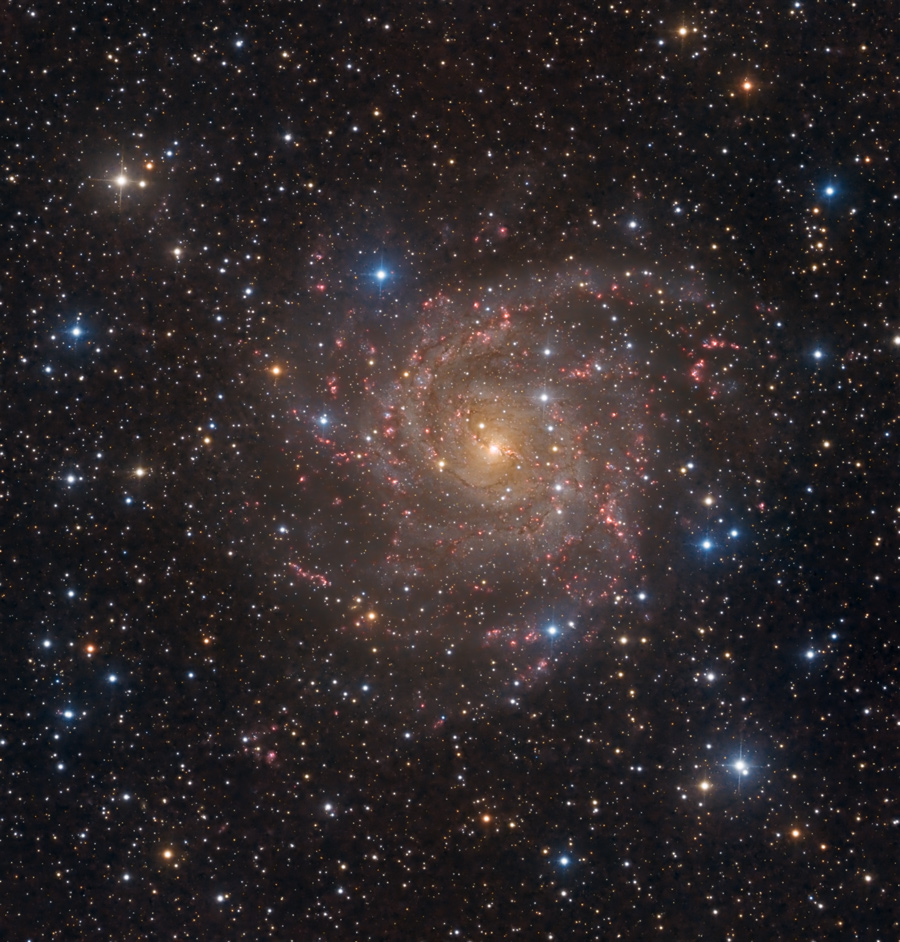
IC 342 is a large grand design spiral galaxy, quite close to us (in cosmic terms) at only about 10 million light years distant. It appears camouflaged among a dense star field, because its light passes through the plane of our Milky Way galaxy in order to reach us. All the intervening stars (all the individual stars you see in this photo are foreground stars in our own galaxy) and gas/dust attenuates the light a great deal, and because red light survives such a journey better than blue light, the entire galaxy takes on a reddish tone. Were it not obscured by all that dust in our
galaxy, IC342 would be visible to the naked eye in dark skies (the most distant celestial object that would be so visible).
The pink regions (of which there are many) are star-forming regions; it is thought that this beautiful galaxy may have undergone a burst of star formation recently (like 60 million years ago; "recent"
and "close" have different meanings in cosmic terms!).
There appears to be a bit of a bar at the center of the galaxy; there is thought that IC342 is evolving into a barred spiral galaxy.
The entire field of the photo is about the same width as a full moon. The galaxy has a diameter of about 70,000 light years, and contains about 100 billion stars (both numbers are less than our Milky Way
galaxy).
I have presented this galaxy in two ways: (i) Showing it in the colors that reach us, reflecting the extinction of much of the blue signal (thereby shifting the image of the galaxy--but not the foreground
stars, which are much closer--toward red), and (ii) showing it as it might look from outside the plane of our galaxy, with more blue (accomplished by lowering the color temperature of
just the galaxy). Click on the image to toggle between the two versions.
Copyright 2021 Mark de Regt